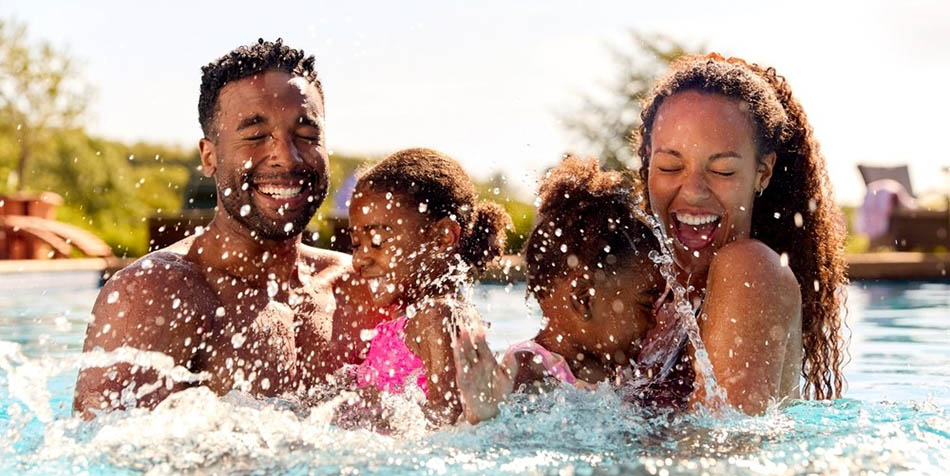
With the right precautions and safety measures in place, swimming can be an enjoyable and rejuvenating activity.
Swimming is a great way to have fun and cool off during the hot summer months. It's also an excellent aerobic exercise. If you've gone swimming, you've probably heard that you should wait 30 minutes after eating before getting in the water. Does this popular piece of advice hold true, or is it a myth that swimming after eating can be dangerous? Read on to discover this and other swimming safety tips.
Where did the myth of swimming after eating come from?
If you grew up with your parents telling you to wait 30 minutes after eating to get in the pool — or if you now tell your own children the same thing — you've probably wondered where that piece of advice came from. Although the exact origins of the belief are unknown, early Boy Scout manuals warned readers that if they swam after eating, they could develop cramps and drown.
With that grim scenario in mind, it's no wonder parents tell their children to wait before swimming! Although there is some truth to the warning, it's not quite as drastic as it seems.
So, can you swim after eating?
To dive — no pun intended — further into the myth that it's dangerous to swim after eating, it's important to understand how digestion works. After you eat, blood flow to the stomach and intestines increases. This means there isn't as much blood flowing to other parts of the body, like your muscles. Poor blood flow can lead to muscle cramps, causing the muscles to contract and become hard and tense. The belief is that if your muscles cramp up too much while you're swimming, it can lead to drowning.
However, muscle cramps usually last a few seconds, although some can last several minutes. Even if your muscles do cramp while swimming, you should be able to tread water long enough for the feeling to pass. The most important thing to remember if you get a cramp while swimming is to avoid panicking. If you start thrashing and overexert yourself, your muscles will tire faster, which could be dangerous.
Can you eat or chew gum while swimming?
Now that you know swimming after eating isn't quite so dangerous, you may be wondering if it's OK to eat or chew gum while swimming. Although there is minimal risk of muscle cramps severe enough to cause drowning, eating or chewing gum while swimming comes with another risk: choking. Chewing gum and eating aren't complicated tasks on their own. But if you combine them with jumping, diving and swimming, they can leave you prone to accidental choking.
Is it OK to swim alone?
Another piece of advice parents often give their children, which also holds true for adults, is to avoid swimming alone. Strong swimmers might feel like it's OK to go for a quick dip by themselves, but it's not advisable. If you swim on your own and get an injury, you may not be able to get help quickly enough to prevent drowning. You should always have a buddy with you, even if a lifeguard is on duty.
Are floaties safe for children?
If you're a parent and your child isn't a strong swimmer, you might be tempted to put them in an inflatable floatation device so they can still enjoy the water. But, these devices can lead to a false sense of safety.
First, they don't actually teach children how to swim. If a child is used to floating with water wings, they may think they know how to swim. In reality, they may not be able to stay afloat without the device. Not only that, but it's possible for children to slip out of these devices. Additionally, floaties are made of materials that can easily be punctured, causing the wearer to sink.
Finally, floaties can make parents less observant because they think the child is safe while using the device. If something happens while the parent isn't paying attention, the child may get injured or drown. Instead of treading water with floaties on, children should be taught to float on their backs, and they should always have one-on-one touch supervision with a responsible caretaker.
Does bathing suit color matter for children?
When you're buying a bathing suit for your child, you might want to steer clear of blue suits. The reason for this is simple: Blue bathing suits can blend in with water. This can make it harder to spot a child during an emergency. Instead, choose brightly colored swimsuits that will stand out in the water. If you're swimming in a light-bottomed pool, consider neon pink or orange bathing suits. Neon green, neon orange and neon yellow stand out well in dark-bottomed pools or lakes. No matter what color swimsuit your child is wearing, supervise them at all times.
While it might be tempting to jump right into the pool on a hot day, it's important to do so wisely. With the right precautions and safety measures in place, swimming can be an enjoyable and rejuvenating activity.